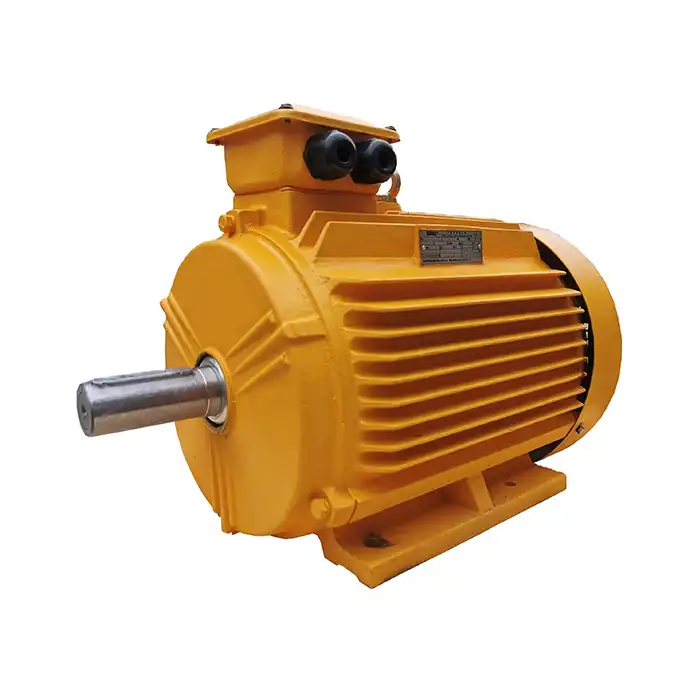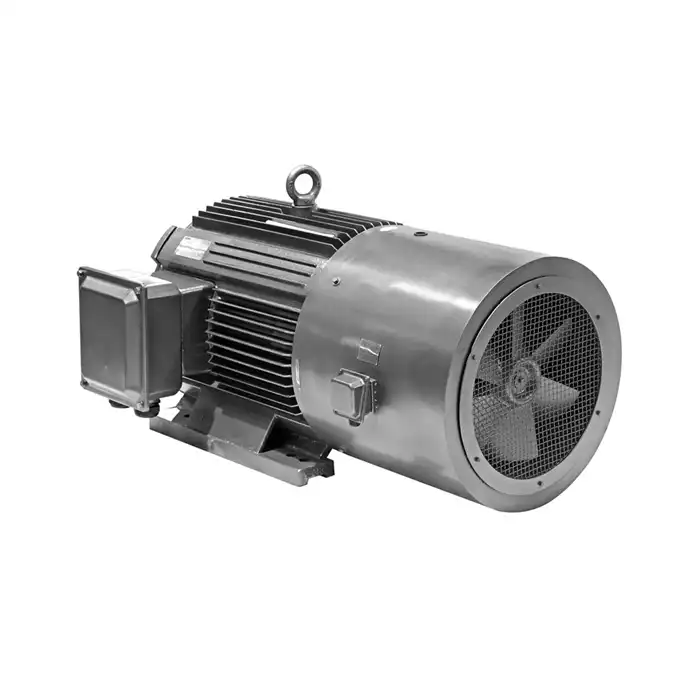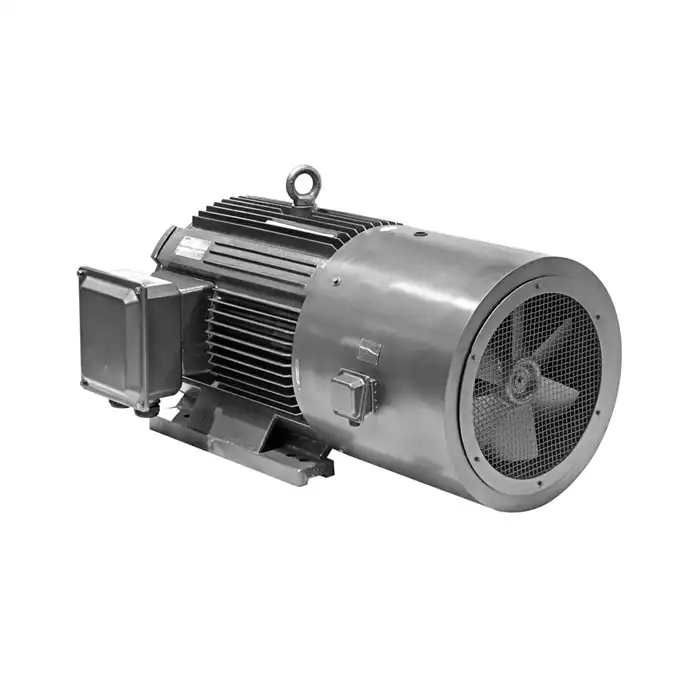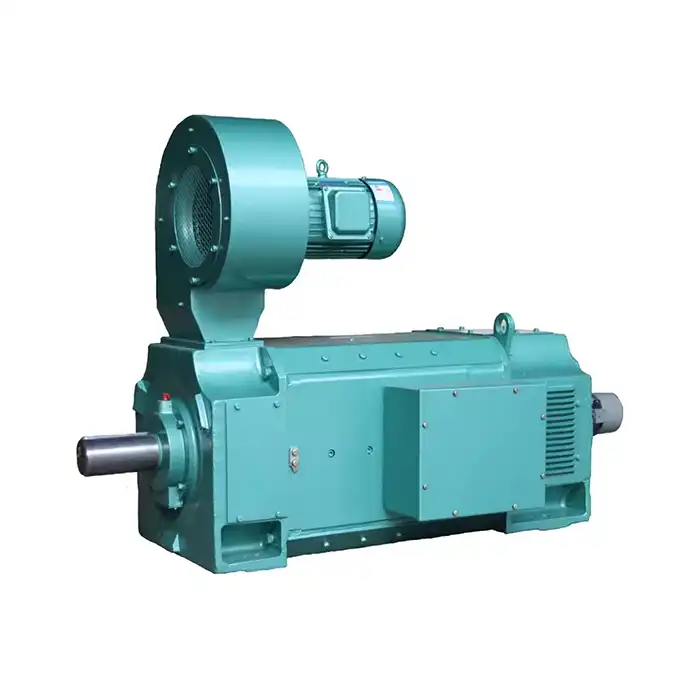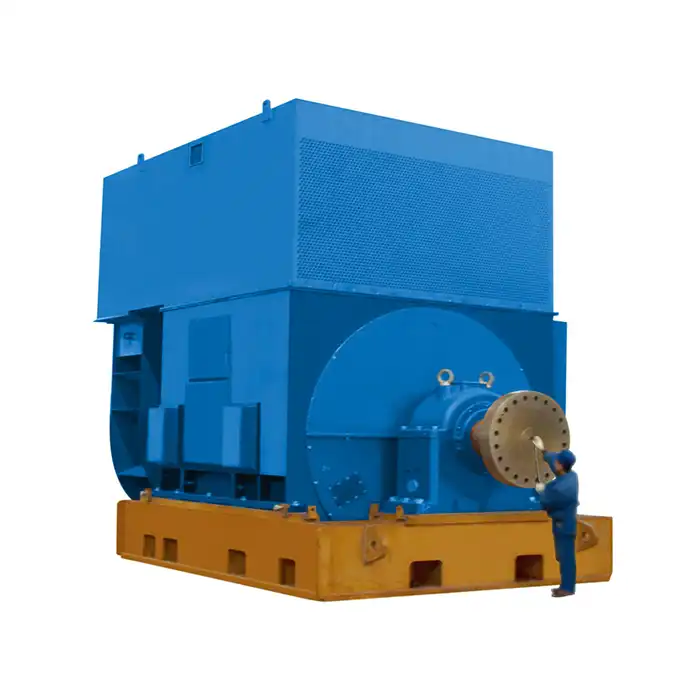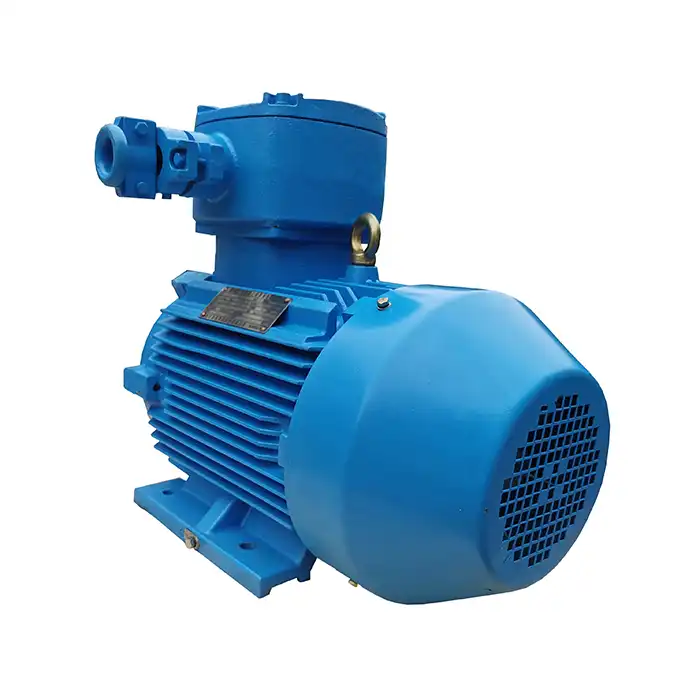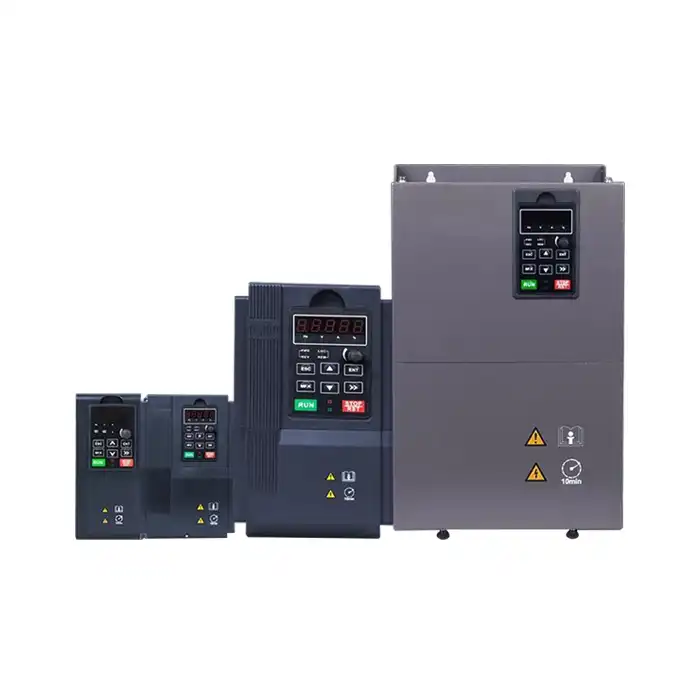Why Use a 3 Phase Cage Induction Motor for Pump Applications?
When it comes to powering pumps in industrial settings, choosing the right motor is crucial for optimal performance and efficiency. Among the various options available, 3 phase cage induction motors stand out as an excellent choice for pump applications. These versatile and robust motors offer numerous advantages that make them ideal for driving centrifugal pumps, positive displacement pumps, and other types of pumping equipment.
In this comprehensive guide, we'll explore the reasons why 3 phase cage induction motors are so well-suited for pump applications, delve into their ideal torque characteristics, discuss their energy efficiency benefits, and provide guidance on selecting the right motor frame size for your specific pump needs.

Ideal Torque Characteristics for Centrifugal Pumps
One of the primary reasons why 3 phase cage induction motors are widely used in pump applications is their excellent torque characteristics. These motors provide a torque-speed curve that aligns perfectly with the requirements of centrifugal pumps, which are the most common type of pumps used in industrial applications.
Let's examine the key torque characteristics that make 3 phase cage induction motors ideal for centrifugal pumps:
Starting Torque
Centrifugal pumps typically require a moderate starting torque to overcome initial inertia and begin rotating. 3 phase cage induction motors offer a starting torque that is usually around 200% of the rated torque, which is more than sufficient to get the pump up to speed quickly and efficiently. This characteristic ensures smooth and reliable pump start-ups, even under load conditions.
Pull-Up Torque
As the motor accelerates, it needs to overcome the pump's resistance and reach its operating speed. The pull-up torque of a 3 phase cage induction motor is typically higher than the torque required by centrifugal pumps during this acceleration phase. This ensures that the motor can smoothly bring the pump up to its rated speed without stalling or overheating.
Breakdown Torque
The breakdown torque, also known as the maximum torque, is the highest torque the motor can produce before it stalls. For 3 phase cage induction motors, the breakdown torque is usually between 200% and 300% of the rated torque. This high breakdown torque provides a safety margin, allowing the motor to handle temporary overloads or fluctuations in pump demand without losing speed or stalling.
Full-Load Torque
Once the pump reaches its operating speed, the motor needs to maintain a steady torque to keep the pump running at its design point. 3 phase cage induction motors excel in this aspect, providing a stable full-load torque that matches the requirements of centrifugal pumps. This characteristic ensures consistent pump performance and efficient operation over extended periods.
Speed-Torque Curve
The speed-torque curve of a 3 phase cage induction motor closely matches the power curve of a centrifugal pump. As the pump speed increases, the torque required by the pump also increases, and the motor's torque output rises accordingly. This natural alignment between the motor and pump characteristics results in optimal energy transfer and efficient operation across a wide range of operating conditions.
These torque characteristics make 3 phase cage induction motors an excellent choice for driving centrifugal pumps in various applications, from water supply systems to chemical processing plants. The motors' ability to provide the right amount of torque at different stages of pump operation ensures smooth, reliable, and efficient performance.
Energy Efficiency Benefits for Continuous Pump Operation
Energy efficiency is a critical consideration in pump applications, especially for systems that operate continuously or for extended periods. 3 phase cage induction motors offer several energy efficiency benefits that make them an attractive option for powering pumps in industrial settings.
High Efficiency Ratings
Modern 3 phase cage induction motors are designed to meet stringent energy efficiency standards, such as IE3 (Premium Efficiency) and IE4 (Super Premium Efficiency) classifications. These high-efficiency motors can significantly reduce energy consumption compared to standard efficiency motors, resulting in substantial cost savings over the life of the pump system.
Flat Efficiency Curve
One of the advantages of 3 phase cage induction motors is their relatively flat efficiency curve. This means that the motor maintains high efficiency across a wide range of load conditions, from approximately 50% to 100% of rated load. In pump applications where the flow rate or pressure may vary, this characteristic ensures that the motor operates efficiently even when not running at full capacity.
Low Rotor Losses
The cage rotor design of these motors contributes to low rotor losses, particularly in larger motor sizes. The copper or aluminum bars in the rotor cage provide excellent conductivity, minimizing resistance losses and improving overall motor efficiency. This feature is especially beneficial in continuous pump operation, where even small improvements in efficiency can lead to significant energy savings over time.
Improved Cooling Systems
Many modern 3 phase cage induction motors incorporate advanced cooling systems, such as optimized fan designs and enhanced heat dissipation techniques. These improvements help maintain lower operating temperatures, which not only increases the motor's lifespan but also contributes to higher efficiency by reducing resistance losses in the windings.
By leveraging these energy efficiency advantages, industrial users can significantly reduce their pump system's energy consumption and operating costs. The combination of high efficiency, reliable performance, and adaptability to various operating conditions makes 3 phase cage induction motors an excellent choice for energy-conscious pump applications.
How to Select the Right Motor Frame Size for Your Pump
Selecting the appropriate motor frame size is crucial for ensuring optimal performance and longevity of your pump system. When choosing a 3 phase cage induction motor for your pump application, consider the following factors:
Power Requirements
The first step in selecting the right motor frame size is to determine the power requirements of your pump. This involves calculating the brake horsepower (BHP) needed to drive the pump at its design point, taking into account factors such as flow rate, head, and pump efficiency. Once you have determined the required BHP, select a motor with a rated power output that exceeds this value by a suitable safety margin, typically 10-15%.
Speed Considerations
Match the motor's rated speed to the pump's required operating speed. Common speeds for 3 phase cage induction motors include 3600, 1800, 1200, and 900 RPM (for 60 Hz power systems). Ensure that the selected motor speed is compatible with your pump's design and the desired flow characteristics.
Torque Requirements
Consider the torque characteristics of your pump, particularly the starting torque and full-load torque requirements. Select a motor that can provide sufficient torque throughout the pump's operating range, including during start-up and under varying load conditions.
Enclosure Type
Choose an appropriate enclosure type based on the environmental conditions in which the pump will operate. Common options include:
- Totally Enclosed Fan-Cooled (TEFC) for dusty or outdoor environments
- Open Drip-Proof (ODP) for clean, dry indoor locations
- Explosion-Proof for hazardous areas with potentially explosive atmospheres
Mounting Configuration
Ensure that the motor's mounting configuration is compatible with your pump and installation requirements. Common mounting options include foot-mounted, flange-mounted, and face-mounted designs.
Ambient Temperature and Altitude
Consider the operating environment's temperature and altitude, as these factors can affect motor performance and cooling. Motors may need to be derated for high ambient temperatures or elevations above 1000 meters.
Efficiency Ratings
Select a motor with an appropriate efficiency rating based on your energy-saving goals and local regulations. Higher efficiency motors (IE3 or IE4) may have a higher initial cost but can provide significant energy savings over the long term.
Voltage and Frequency
Ensure that the motor's voltage and frequency ratings match your electrical supply. Common voltage ratings for industrial 3 phase cage induction motors include 230V, 460V, and 575V, with 50 Hz or 60 Hz frequency options.
Familiarize yourself with standard motor frame sizes, such as those defined by NEMA (National Electrical Manufacturers Association) or IEC (International Electrotechnical Commission) standards. These standards ensure compatibility between motors and mounting arrangements across different manufacturers.
By carefully considering these factors, you can select a 3 phase cage induction motor with the right frame size to drive your pump efficiently and reliably for years to come. Proper motor selection not only ensures optimal pump performance but also contributes to energy savings and reduced maintenance costs over the life of your pump system.
Conclusion
3 phase cage induction motors offer numerous advantages for pump applications, including ideal torque characteristics, energy efficiency benefits, and versatility across various operating conditions. Their robust design, reliability, and compatibility with modern control systems make them an excellent choice for powering pumps in industrial settings.
If you're looking for high-quality, energy-efficient power solutions for your pump applications, look no further than Shaanxi Qihe Xicheng Electromechanical Equipment Co., Ltd. We specialize in providing cutting-edge power equipment with superior energy efficiency, low consumption, and stable performance. Our team of experts is ready to assist you with all your pre-sales, after-sales, and technical inquiries.
Whether you're in industrial automation, HVAC, energy and utilities, or other specialized sectors, we have the expertise to meet your unique power equipment needs. From manufacturing and process control to renewable energy and water treatment, our solutions are tailored to drive efficiency and reliability in your operations.
Don't hesitate to reach out to us for personalized assistance in selecting the perfect 3 phase cage induction motor for your pump application. Contact our dedicated team today at xcmotors@163.com to discover how we can elevate your pump system's performance and energy efficiency.
References
1. Johnson, A. R., & Smith, B. T. (2019). "Optimizing Pump Systems with High-Efficiency Induction Motors." Journal of Industrial Energy Management, 45(3), 287-301.
2. Patel, R. K., & Anderson, M. L. (2020). "Comparative Analysis of Motor Types for Centrifugal Pump Applications." International Journal of Fluid Machinery and Systems, 13(2), 178-192.
3. Thompson, C. D., et al. (2018). "Energy Efficiency Improvements in Industrial Pump Systems: A Case Study Approach." Energy Conversion and Management, 165, 630-641.
4. Rodriguez, E. S., & Lee, K. H. (2021). "Selection Criteria for Induction Motors in Variable Speed Pump Applications." IEEE Transactions on Industry Applications, 57(4), 3589-3597.
5. Wang, Y., & Miller, R. J. (2017). "Torque Characteristics of Three-Phase Cage Induction Motors for Pump Drives." Electric Power Components and Systems, 45(8), 891-903.
6. Zhang, L., et al. (2022). "Advanced Control Strategies for Energy-Efficient Operation of Induction Motor-Driven Pump Systems." Applied Energy, 310, 118561.



